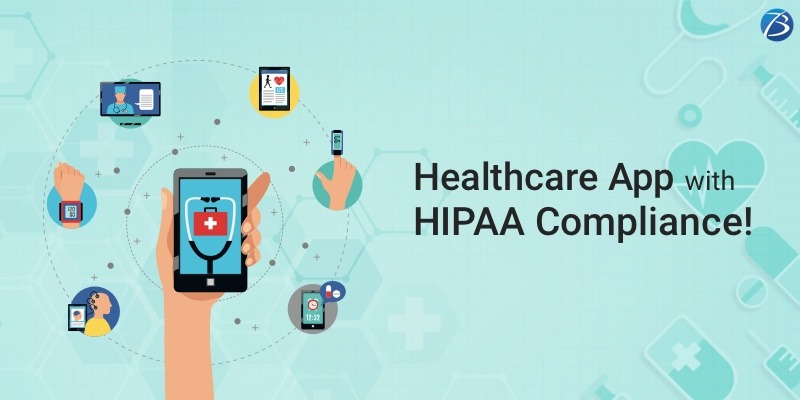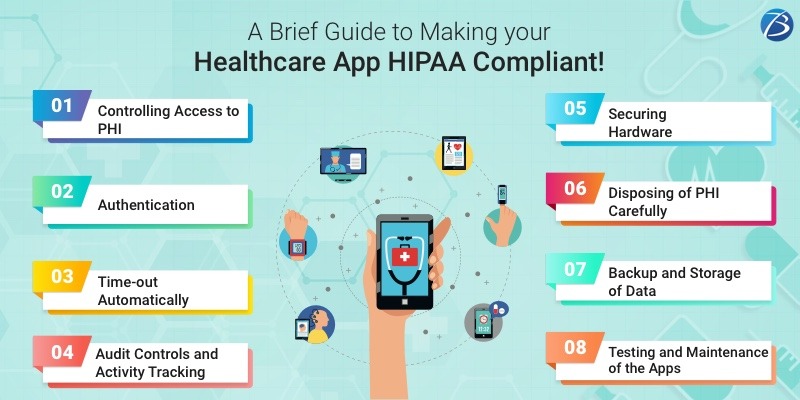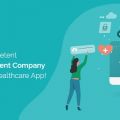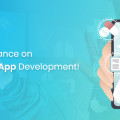A Brief Guide to Making your Healthcare App HIPAA Compliant!


In the year 2016, an Illinois-based healthcare network had failed to take proper preventive measures and had not conducted the risk analysis thoroughly. Their 4-5 unencrypted employee laptops were stolen from different places and the hospital system had failed to have their physical, administrative, and technical safeguards in place. It was estimated that this incidence had affected about 4 million people and the healthcare network had to pay an amount of $5.5 million as a HIPAA settlement. Huge! Isn’t it!
Such data violations and breaches can easily occur in this digital era. The data can be easily vulnerable to cybercrimes and can be misused in several ways. So, it is essential for all kinds of healthcare organizations to keep HIPAA privacy and security rules in mind while developing any medical apps or telehealth solutions. If you want to get deeper insights into the significance of HIPPA compliance, do read our blog here.
In this blog, we have outlined the vital considerations and steps to be taken to make a telehealth app HIPAA compliant. So, without further delay, let’s get started.
Noteworthy Considerations for Creating a HIPAA Complaint Telehealth App
For architecting HIPAA compliant apps, the following primary rules should be adhered to:
- Privacy
- Security
- Breach
- Enforcement
While all the four rules are important, privacy and security rules hold the utmost importance, and most healthcare app development companies primarily focus on these while developing medical app solutions. These rules consist of technical and physical safeguards majorly, and they are explained below:
Technical safeguards
Technical safeguards majorly focus on encrypting the medical data i.e. ePHI (electronic protected health information) completely which is stored or transferred on different devices and servers. Some notable practices for technical safeguard include the following:
- Automatic logoff
- Unique user identification
- Emergency access process
Physical safeguards
Physical safeguards are related to securing facilities and devices that store health data. These include protection of the network used for data transfer, the backend, as well as the devices on iOS and Android from unauthorized intrusion, environmental and natural hazards, etc. These safeguards ensure that these entities are not lost, compromised, or stolen. For securing the medical applications, it is necessary to enforce authentication (probably through a multi-factor authentication system) and make sure that it’s impossible to access those applications without authentication.
Besides these, one more significant way is to follow the minimum necessity requirements i.e. not to gather more data than required and nor even store the vital data longer than actually needed. Also, it is a better option to avoid transmitting the PHI data through push notifications or leak the data in backups and logs.
If you want to gain knowledge on what health data falls under HIPAA compliances and what entities are covered under this Act, have a glimpse at our blog here.
Key Steps to Ensure HIPAA Compliance for a Telehealth App!

Controlling Access to PHI
As per the HIPAA Security and Privacy Rule, the access to patient data should be based on the requirement and the clearance level. The rule safeguards data by limiting access, and this can be done by assigning unique identities and similar privileges to users. Here are some ways to control and limit access to PHI:
- Assigning a specific ID to every user will help in tracking and identifying the activities of the users.
- Enlisting the privileges like ‘Create New Record’, ‘Edit Record’, ‘View Record’, ‘Delete Record’, etc.
- Assigning such privileges to various groups of users as per the role/position in the hospital, for instance- doctors, admin, lab technicians, etc.
Authentication
After assigning the privileges, make sure that the app or the medical system has the ability to verify that if someone is trying to access PHI, that person is actually the one he/she claims to be. This safeguard can be achieved in the following ways:
- Physical means of identification like a token or a key
- Password
- Biometrics i.e. a face ID, a voice ID, or a fingerprint
- PIN- Personal Identification Number
Time-out Automatically
It must be ensured that any session or a particular activity is closed i.e. timed-out automatically after a certain period of inactivity. If the user wants to continue working on that activity in the account, he/she will have to log in again. As a result, in case the device is lost or the application is left unattended, important data will remain secured and chances of its mishandling will be reduced to a great extent.
Audit Controls and Activity Tracking
If the audit control standards are not followed, it can lead to bigger mishaps and bigger fines. So, PHI must be audited using some procedure or using software or hardware. Here are some important considerations:
- Keeping a watch on where and how the PHI is stored in the system.
- Monitoring and tracking login and logout of the users.
- Recording and keeping knowledge of who, when, and where is accessing the data, modifying it, updating, or deleting it.
Securing Hardware
Accessing the medical data remotely using a smartphone or a laptop may sound convenient but at the same time, it is risky too. So it is a must that all the devices from which medical data will be accessed should be encrypted. The systems must be possibly safeguarded with firewalls, VPNs, Antivirus, SSL Certificates, etc. Also, here are some strategies to achieve hardware security:
- Ask the employees to delete data from their devices when they exit the organization.
- Place the PCs and servers in a safe room or location.
- Doors and workstations in the organization must be locked to guard against any sort of theft.
- About workstations, restrict access to only the ones who are authorized.
- Make sure that your medical organization is under Video Surveillance.
- Make sure that sensitive data is not shared through push notifications since it can be visible to anyone.
Few Other Measures to Ensure HIPAA Security:
Disposing of PHI Carefully: Once the use of PHI is completed, it must be permanently destroyed from all hidden places like memory cards, USBs, portable devices, etc.
Backup and Storage of Data: This data is highly valuable and hence it is important to have storage strategies in place so that backup can be retrieved whenever required. Developing business continuity plans and disaster recovery are wise options in this case.
Testing and Maintenance of the Apps: To ensure efficiency and stability of the apps or platforms, test them thoroughly from time to time and update them periodically.
Final Views:
Threats related to social engineering, phishing, security breaches, hacking of health data, etc. are on the rise in the healthcare industry and they can be only prevented to a great extent if HIPAA Compliance is followed diligently. It will assure the auditors that you have taken enough efforts to protect sensitive and confidential medical data i.e. PHI. So, every healthcare app development company must abide by HIPAA rules and regulations.
To know more about our core technologies, refer to links below:
React Native App Development Company
Other articles and publications:
Articles and publications of other companies:
- +1 (469) 277-0804
- 8305 Tripoli Trl, Frisco, TX 75034, United States
- www.biz4solutions.com/











